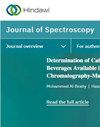基于快速非支配排序遗传算法的近红外光谱定性判别变量选择方法
IF 2.1
4区 化学
Q4 BIOCHEMICAL RESEARCH METHODS
引用次数: 1
摘要
一种可靠、有效的定性近红外光谱鉴别方法是建立良好模型的关键,而这些方法所建立的模型的性能高度依赖于有效的特征提取。特征选择的目标是将选择的变量与感兴趣的属性关联起来,许多人已经成功地做到了这一点。然而,许多选择方法只关注与被分析物或感兴趣的属性的强关联,而忽略了变量之间的相关性。提出了一种基于快速非支配排序遗传算法(NSGA-II)的近红外光谱定性判别变量选择方法。该方法有两个目标函数:(1)最大化类间方差与类内方差之比之和;(2)最小化所选变量之间的相关系数之和。以中国贵州省不同产地、不同部位的124份烟草样品的FT-NIR光谱为实验对象,将该方法与基于偏最小二乘的判别分析(PLS-DA)相结合,建立烟叶的部分等级判别模型,并与基于全光谱的PLS-DA模型进行比较。结果表明,采用NSGA-II的PLS-DA模型具有相当或更好的正确识别率和合理识别率,能够很好地区分烟叶的不同部位。结果表明,NSGA-II可以选择少量有效的特征变量构建高性能的定性判别模型,是一种很有前途的算法。此外,该方法不是专为光谱数据设计的。这是一种通用策略,可用于其他类型数据的变量选择。本文章由计算机程序翻译,如有差异,请以英文原文为准。
A Variable Selection Method Based on Fast Nondominated Sorting Genetic Algorithm for Qualitative Discrimination of Near Infrared Spectroscopy
A reliable and effective qualitative near-infrared (NIR) spectroscopy discrimination method is critical for excellent model building, yet the performance of models built by these methods is highly dependent on valid feature extraction. The goal of feature selection is to associate the selected variables with the property of interest, which many have done successfully. However, many of selection methods focus only on strong association with the analytes or properties of interest, neglecting correlations between variables. A variable selection method based on a fast nondominated-ranking genetic algorithm (NSGA-II) was proposed in this paper for qualitative discrimination of NIR spectra. The method had two objective functions: (1) maximizing the sum of ratios of interclass variance to intraclass variance, (2) minimizing the sum of correlation coefficients between the selected variables. FT-NIR spectra of a total of 124 tobacco samples from different origins and parts in Guizhou Province, China, were used as the experimental objects, and the part-grade discrimination models of tobacco leaves were established by combining this method with partial least squares-based discriminant analysis (PLS-DA), and compared with PLS-DA model based on the full spectrum. The results showed that the performance of PLS-DA model with the NSGA-II was improved, with a comparable or better correct discrimination rate and reasonable discrimination rate, and could discriminate different parts of the tobacco leaves well. It indicates that the NSGA-II can select a few and effective feature variables to build a high-performance qualitative discrimination model and is proved to be a promising algorithm. In addition, the method is not designed exclusively for spectral data. It is a general strategy that could be used for variable selection for other types of data.
求助全文
通过发布文献求助,成功后即可免费获取论文全文。
去求助
来源期刊

Journal of Spectroscopy
BIOCHEMICAL RESEARCH METHODS-SPECTROSCOPY
CiteScore
3.00
自引率
0.00%
发文量
37
审稿时长
15 weeks
期刊介绍:
Journal of Spectroscopy (formerly titled Spectroscopy: An International Journal) is a peer-reviewed, open access journal that publishes original research articles as well as review articles in all areas of spectroscopy.
 求助内容:
求助内容: 应助结果提醒方式:
应助结果提醒方式:


